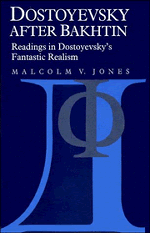1 - Introduction: Dostoyevsky's fantastic realism
Published online by Cambridge University Press: 21 August 2009
Summary
Most sympathetic readers seem to grasp intuitively what fantastic realism is. Some relate it to Dostoyevsky's immersion in German Idealism; some to his Christian beliefs; some to his anticipations of Nietzsche or Freud; some to his romantic penchant for contrasts and intensity and the traditions of Gogol, Dickens and Balzac; or latterly, in the wake of a rediscovered Bakhtin, to the carnivalization of literature; some to his polyphonic handling of point-of-view; some to his modern grasp of the way meanings recede indefinitely with truth as a mere vanishing point of the text. One thing is clear in all this: a wide variety of modes of reading responds to the magnetism of Dostoyevsky's text and plausibly claims him as its own, thus purporting to disclose the underlying characteristics of fantastic realism.
In this chapter I shall try to map out some of the choices and move towards some general principles for further exploration. At this stage I would venture just one generalization. Critical literature shows that Dostoyevsky's texts both attract common-sense readings in the tradition of social realism and strenuously resist them. This book takes the former phenomenon for granted and explores the latter.
I am not sure that Dostoyevsky ever actually used the expression ‘fantastic realism’ but his statements about his style fully justify its use as a shorthand term.
- Type
- Chapter
- Information
- Dostoyevsky after BakhtinReadings in Dostoyevsky's Fantastic Realism, pp. 1 - 32Publisher: Cambridge University PressPrint publication year: 1990

